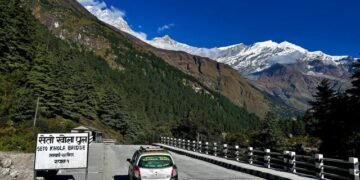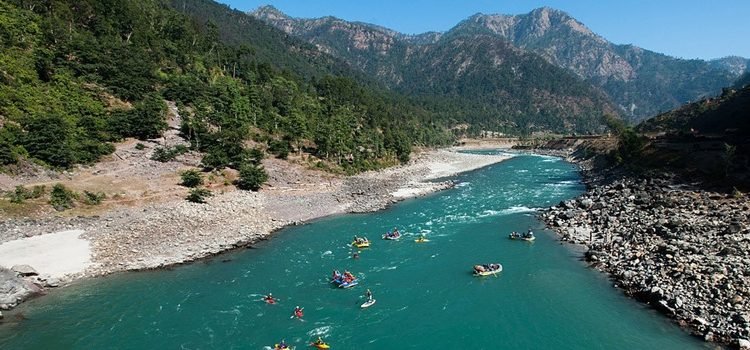Kathmandu: China is constructing a dam on the Mabja Zangbo river in Tibet Autonomous Region, near the tri-junction of the Nepal’s border with India and China, satellite imagery has recently revealed.
China’s move is said to be aiming to use this dam to divert the water flow of the river and store the water which experts warn could cause a scarcity in the areas heavily dependent on the river, and also could lead to lower water levels in the Karnali river in Nepal.
Satellite images tweeted on January 19, 2023 by Damien Symon, a geospatial intelligence researcher at the Intel Lab, show the construction of the dam, around 16 km north of the tri-junction, since May 2021. The dam appears to be 350 to 400 metres in length.
Since May 2021, China has been building a dam on the Mabja Zangbo river. As the structure is not complete, it will raise concerns about China’s control on the water in the region. The structure is currently under construction, so the purpose is unknown, said Symon.
While experts warn multidimensional effects of the structure, Nepal is more vulnerable. The Mabja Zangbo river, the upper portion of the Karnali river, joins the Karnali river in Nepal before flowing into the Ganga river in India.
The river flowing through the underserved districts of Humla, Bajura, Kalikot, Dailekh, Achham and Surkhet in Nepal serves as a lifeline for millions of Nepali people downstream. The people are dependent on the river for various purposes ranging from irrigation to hydropower projects, drinking water, livelihoods through fishery, boat operation etc. Following are some of the effects of the structure.
Control over the flow of the Karnali river:
When the dam construction is complete, China will take control of the flow of the river. While affecting Nepal’s irrigation, hydroelectricity production, and aquatic ecosystems, the dam’s capacity to store and release the water can significantly alter the regime of the lower coastal area.
Environmental concerns:
Reduction in the water flow affects the sediment transport causing river erosion and bank instability. This can affect fish populations and put biodiversity at risk.
Geopolitical unrest:
The dam’s proximity to the disputed borders raises geopolitical concerns. Nepal is heavily dependent on the Karnali river for water resources, and China’s unilateral construction could increase tension in the water sharing.
Water scarcity:
Millions of Nepali people are dependent on the Karnali river for irrigation, drinking water and hydropower. Reduction in the water level can lead to the widespread water shortage, which will affect agriculture, livelihoods and public health.
Energy security:
Nepal is dealing with power shortages, and hydropower projects play an important role in meeting the country’s need for energy. The dam can affect the existing hydropower projects of Nepal, and hamper its energy security goals.
Livelihoods:
Agriculture, fisheries and tourism are the main drivers of Nepal’s economy. Alteration in the flow of the Karnali river can seriously cause the impact in the region. It may risk the livelihoods of millions of Nepali people.
Conclusion:
So, there is a need for China to engage in a transparent talk with Nepal regarding the project. There is a need to timely address the concerns about water sharing and environmental impacts between Nepal and China.




















